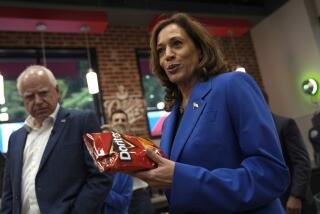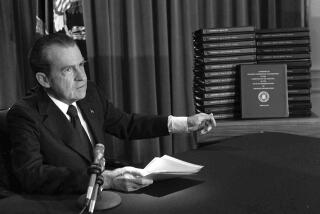Clinton Economic Plan Has Become the Victim of Political Economics
As it turns out, cutting the federal budget deficit has emerged as virtually the sole priority of the Democrats controlling the White House and Congress in Washington.
Thanks to the continued harping of conservative and centrist congressional Democrats, the Clinton Administration’s original proposals to stimulate employment and promote public investment in education, training and infrastructure have virtually disappeared from sight.
Whatever happened to the pledge to “put people first”?
Clinton’s victory last November was built in considerable part on popular anger over economic privation and the Democratic candidates’ continuing empathy with the working and middle class Americans “who took it on the chin” during the Reagan-Bush years.
The new Administration may eventually succeed in offering these constituencies a major and effective program for national health insurance. Beyond that possibility, however, the Clinton program as it staggers out of Congress provides virtually no innovative and constructive initiatives which will directly promote jobs and higher wages for those who need them.
Why?
We can hardly explain these unredeemed pledges by pointing to a sudden and vibrant improvement in the material circumstances of the vast majority of workers and households.
The “jobless recovery” still leaves close to 9 million unemployed, only marginally fewer than when the presidential election took place last November.
And real hourly earnings have barely recovered from the recession, still wobbling from the effects of 12 years of right-wing economics.
In the first quarter of 1993, real hourly earnings for production and non-supervisory workers in the private non-farm sector--roughly 80% of all wage-and-salary employees--still remained 4% below their pre-recession peak in 1988 and fully 15% below their postwar peak in 1973.
No, those who begged candidate Clinton for economic relief have not suddenly found it in the current recovery. Rather, it would appear that we must ascribe the Washington Democrats’ increasingly austere economic policy turn to two major factors--both of which candidate Clinton warned us about in his campaign.
The first involves the triumph within his Administration and among congressional Democrats of precisely the kind of “trickle-down” economic strategy that the President-as-candidate scathingly scorned on the hustings.
The second lies in the power of wealthy interests to dominate politics in Washington. One of the main reasons that so many Clinton proposals have bit the budget-cutting dust is that one congressional voice after another insisted that the economic package should rely on fewer tax increases and more spending cuts in its drive to cut the deficit.
But who would have paid the taxes that the Administration was proposing to raise? Were these congressional harpies defending the notoriously “beleaguered” middle class?
The White House estimated in the February outline of its economic program that fully 70% of the proposed tax increases would have been borne by households earning $100,000 or more and nearly 60% by those earning $200,000 and above. Only 8% of the total tax increases would have hit those earning $50,000 or less--an income range which includes roughly three-quarters of all households in the United States.
The brunt of the proposed tax increases would have been borne, in short, by precisely the affluent and wealthy interests who have long dominated Washington politics and come close to owning Congress.
What has happened, in effect, is that a pliant and increasingly acquiescent White House has caved in to the kinds of economic strategies and wealthy interests against which the President successfully waged rhetorical battle during the 1992 campaign.
Could this have been prevented?
Not, I think, with our political system as currently constituted. There is now too much disconnection between the dynamics of election campaigns, on the one hand, and the business of running government, on the other.
Popular interests are elicited and courted during campaigns. But once the campaign dust settles, the entrenched forces that have continually controlled Washington politics go back to work.
In order to overcome this separation, we need sustained and continuing popular mobilization, between elections at least as much as during them, to hold our fair-weather politicians toes to the fires of their electoral promises.
I don’t think Ross Perot and his United We Stand, America organization provides the answer. I don’t trust Perot’s populism, and he’s as crazed about reducing the deficit as the budget hawks in Washington. But I do think that his articulated conception of relatively independent popular organizations, committed to sustained popular mobilization, makes sense.
More to Read
Get the L.A. Times Politics newsletter
Deeply reported insights into legislation, politics and policy from Sacramento, Washington and beyond. In your inbox three times per week.
You may occasionally receive promotional content from the Los Angeles Times.










